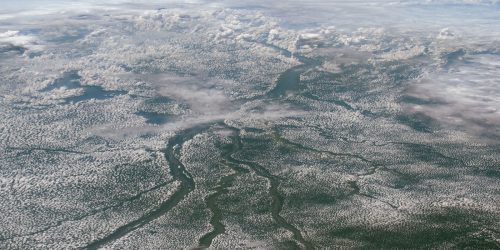A new study supported by the Climate Program Office’s Atmospheric Chemistry, Carbon Cycle and Climate (AC4) Program investigates the important air quality impacts of wildfires, and how new satellite instruments can elevate our understanding of those impacts. Researcher Xiaomeng Jin of Rutgers University, a recent alumnus of the NOAA Climate And Global Change Postdoctoral Fellowship Program, led a research team including AC4-funded scientist Ronald Cohen of the University of California Berkeley and Arlene Fiore of the Massachusetts Institute of Technology. The team’s goal was to improve our ability to use satellite measurements to study wildfires in California from 2018 to 2020. The AC4 program funded this project to examine wildfire smoke transformations at the transition between wildlands and urban areas.
The research community has long acknowledged that wildfires can impact air quality, by directly releasing pollutants and by emitting chemicals that can transform into harmful ozone in our atmosphere. As fires are projected to occur more frequently in future climate scenarios, it is increasingly important to understand how fires impact the chemical composition of the atmosphere, air quality, and human health. The satellite TROPOspheric Monitoring Instrument (TROPOMI) gives researchers an enhanced view of fire emissions in smoke plumes and over urban areas, though the heavy load of aerosols near fires causes uncertainty in the data. The research team accounted for these errors and improved the TROPOMI dataset, then fed it into NOAA’s Hazard Mapping System to investigate how pollutants changed from a day-to-day basis to yearly. This work builds upon research from field campaigns like the NOAA- and NASA-led Fire Influence on Regional to Global Environments and Air Quality Experiment (FIREX-AQ), which sampled wildfire plumes near the source. These results, published in Environmental Science & Technology, consider both the pollutants of fire plumes and how they interact with distinct chemical environments in the atmosphere as they travel to more populated areas in California. A critical outcome from this study shows that formaldehyde, a pollutant which reacts quickly with other chemicals in the atmosphere to drive ozone creation, can be more efficiently transported to populated areas than other pollutants. Ground level ozone presents numerous health problems, so understanding the processes creating this pollutant is key to managing the public health effects. This project, along with others supported by AC4, improves our understanding of the links between wildfires and air quality.










